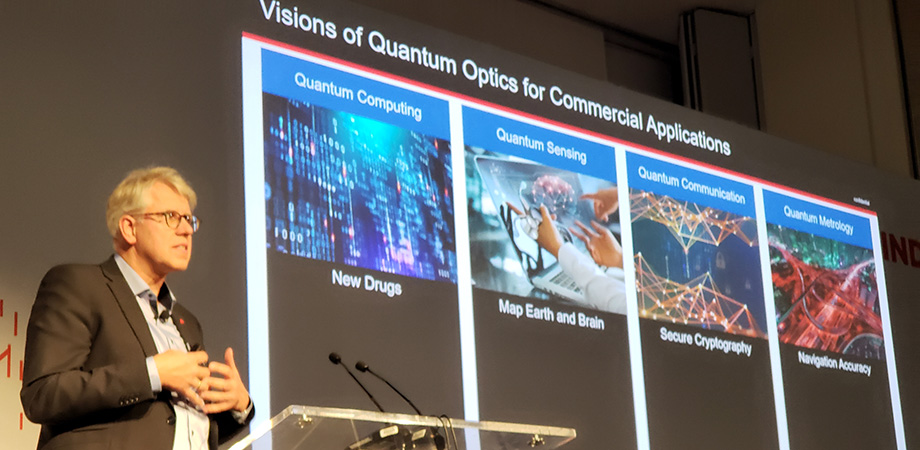Building an Industry: the Commercialization of Quantum Technology

At an industry session during SPIE Photonics West 2020, panelists gave an overview of the potential markets for quantum applications, with information about current policy, funding opportunities, startups, components suppliers, and established industry in the quantum arena.
Two speakers helped set the stage for current progress in quantum research by reviewing recent policy and funding for quantum. Joseph Broz, executive director of the Quantum Economic Development Consortium (QED-C) explained the goal of the consortium, which is to identify gaps, identify economically important quantum applications, facilitate industry coordination around this technology, and guide US government R&D investment. The QED-C developed out of the National Quantum Initiative, a new US-based initiative that specifically calls out the importance of deepening engagement with quantum industry. In 2021, the QED-C will issue an RFP and direct initial funding.
However, the UK has a significant head start in their investment in quantum technology. Sara Diegoli, QuantIC Programme Manager, explained the goals of the UK National Quantum Technologies Programme, which was launched in 2014 to accelerate the commercialization of quantum technologies for the benefit of the UK economy and society. The program has brought together academia, government, and industry to achieve a common goal, establishing a new model to stimulate bottom-up technology-driven innovation.
Many of the speakers at this industry session pointed to the "four pillars" of quantum technology, which are often lumped together as "quantum," but actually have quite different goals and requirements, and are at different stages of technology readiness: communication, simulation, metrology/sensing, and computing.
While there's some disagreement as to whether there's a fifth quantum pillar (imaging), where most do agree is on the statement that quantum metrology is the nearest to commercial viability, with likely the biggest payoff. Communication is probably next, while quantum computing is still the farthest off in the horizon.
The speakers also all agreed that one of the biggest contributing-and hindering-components for quantum is laser technology.
"The component size, cost, and reliability [of lasers] are prohibitive for wide-scale deployment," said Jami Abo-Shaeer, CEO of Vector Atomic, to a room full of laser researchers and developers. "I say this not as an accusation, but to point out an opportunity."
He says that quantum devices are not scalable as implemented, since they become exponentially less reliable and more expensive as the laser count grows. Practical quantum devices will require cheap, small, reliable, and autonomous lasers and electronics in order to compete with conventional technologies.
In addition to the technology obstacles, the companies in this space are running up against hiring challenges. Broz noted that QED-C consortium members are finding that there are just too few candidates, and most have insufficient qualifications. Quantum technologies are shifting from fundamental R&D to engineering, and there just aren't that many people conducting quantum research and looking to move into industry. To address the issue in the US, QED-C is working with academic members of the consortium to develop curricula that will meet employer's needs in this area.
"If I were to go through school again, I would probably do a master's level in the engineering sciences if I wanted to participate in quantum information science in the next ten years," said Broz.
Other panelists, like Wilhelm Kaenders, co-founder and CTO of TOPTICA Photonics AG, pointed to commercialization challenges like a competitive market with functioning classical (non-quantum) solutions, and guarded IP due to new political tensions. He noted that research that was open for many years now has more secrets and protections, and ended with a plea: "The world is too small and technology too fast for one country alone; let's do it together, from the start."
For quantum to succeed, it will ultimately need to outperform existing solutions for the same cost and form factor. For most quantum tech, that goal is still a ways off.
| Enjoy this article? Get similar news in your inbox |
|



